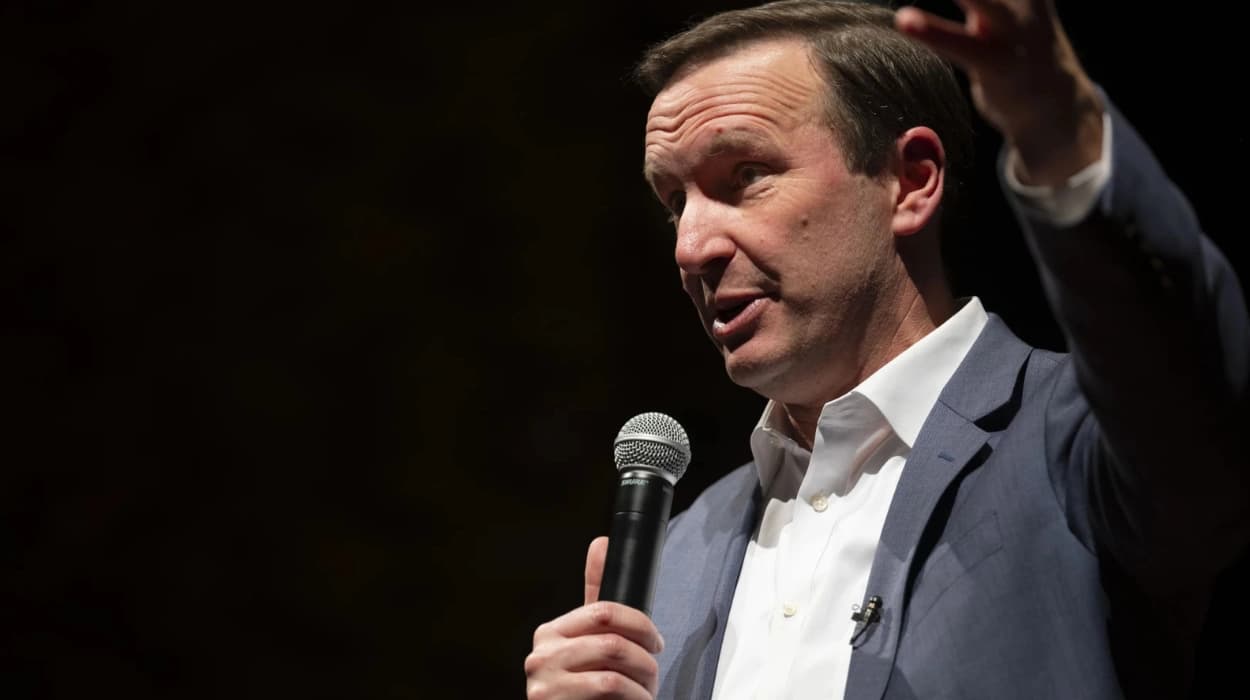Summary
- Congressional Democrats assess strategy for funding legislation.
- The appropriations deadline on September 30, 2025, is approaching.
- Likely push for continuing resolution to avoid shutdown.
- Divided opinions on policy riders and length of CR.
Ultimately, enough Democrats supported a GOP budget package that excluded Democratic involvement during the most recent government funding battle in March.
This prevented a government shutdown and kept the government open, but it infuriated a base of supporters who wanted the party to fight when federal funding was being canceled.
U.S. Senator Chris Murphy, who had opposed the GOP budget bill at the time, urged his party to "change our tactics." However, the senator from Connecticut stated six months later that Democrats will take a different approach when it comes to government funding.
“Ultimately what happened in the spring was … a handful of [Senate] Democrats voted for a bill that was written totally and completely by Republicans,”
Murphy said in an interview.
“That’s not going to happen this fall. Democrats in the Senate aren’t going to vote for a bill that isn’t negotiated between Republicans and Democrats.”
The most pressing issue facing Democrats, however, is how they would go about using their unique influence in a Republican-controlled Congress and what they would agree to in a spending agreement to maintain operations.
Lawmakers face a deadline of September 30 due to the imminent possibility of a shutdown. Additionally, U.S. Representative Rosa DeLauro, a Democrat from the 3rd District, and Murphy, both Connecticut appropriators, are actively participating in the discussion surrounding fiscal year 2026 financing. Both are advocating for bipartisan talks, but they also emphasized that the Trump administration's continued withholding of cash and a lack of Democratic goals are unacceptable.
In order to buy themselves more time to negotiate a full-year funding bill, Congress is looking at a short-term agreement. For a set period of time, federal agencies continue to operate at their current levels thanks to that stopgap measure, which is called a continuing resolution.
The battles over government financing have grown more difficult for Congress. However, the White House's external demands and a persistent campaign to withhold funding that Congress has already approved complicate this most recent cycle.
This summer, Republicans passed an initial rescissions package that reduced foreign aid and public broadcasting funding by billions of dollars. The Trump administration is now attempting to reclaim an extra $5 billion by avoiding Congress using a procedure known as "pocket rescissions."
Republican leadership recently stated that the ACA subsidy extensions would not be included in negotiations, even though they appeared to be on the table. John Thune, a Republican from South Dakota, said he wants a "clean" bill.
With the political reality that many Americans would lose coverage or face higher premiums at the beginning of the 2026 midterm election year, Democrats have not been the only ones advocating for the continuation of those subsidies. A group in the House recently supported legislation before spending talks intensified, and several Republicans have also been in favor of extending the tax credits.
DeLauro stated that health care will be a "broad" item that Democrats are pursuing, without going into the details of what might be discussed at the negotiating table.
“There’ll be a broad discussion about health care. Health care is a cost of living issue. I’m not specifying this one or that one,”
DeLauro said.
“We need a broad conversation about what should be included and that’s what the Democratic leadership is going to be doing.”
After losing the November elections, Democrats' supporters have been demanding that they fight harder, and they have been expressing this desire for months.
Months ago, Democrats in the House and Senate expressed frustration with their funding plan.
Blumenthal and Murphy both voted against the funding bill, as did many of their Senate colleagues. In the spring, almost all of the House Democrats, including all of Connecticut's delegates, voted against the bill.
Furthermore, amid negotiations and the difficulty of reaching an agreement, the possibility of a shutdown looms large. Additionally, Republicans and Democrats are already hinting at the blame game that would undoubtedly ensue if funding stops beyond September 30.
Republicans say the ball is in Democrats’ court to accept a deal to keep things open. Democrats, meanwhile, argue the GOP controls Congress and the White House and it’s on them to find consensus.
“The ultimate question of whether there’s going to be a government shutdown at the end of the month is going to be up to congressional Democrats, and that’s just the way it is,”
said House Speaker Mike Johnson, R-La.
There hasn’t been a government shutdown since the first Trump administration. It was a partial shutdown that started late December 2018 and lasted about a month into January 2019.
If there’s another one during Trump’s second term, Republicans would pay the price, Democrats say.
“I think we can come to a reasonable compromise here,”
Murphy said,
“And if the government shuts down, everybody in this country knows who runs the House, who runs the Senate and who runs the White House.”
What leverage Senate Democrats can realistically use before Sept 30?
Democrats can use their power to stop funding bills in the Senate so long as Republicans can't get 10 or more Republicans to defect to pass legislation (this, in effect, forces Republicans to negotiate on Democratic terms or risk a popular government shutdown).
Republicans need a minimum of seven Democratic votes to pass any appropriations bills. This allows Democrats leverage to ask for concessions in exchange for support.
Just the credible threat of voting against a funding bill (that does not meet Democratic priorities, which could be protecting healthcare programs, Affordable Care Act tax credits, or rescinding spending cuts) can glean negotiating concessions from Republicans.

